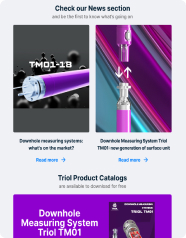
As production technology evolved with the single-action EP01 unit, we faced a lack of power in our units to provide the target flow rate which is up to 300 bpd for low performance well.
The solution is at first sight obvious – to increase the power of the unit and thereby expand the range of products. However, this solution has disadvantages: firstly, it increases the cost of the unit; and secondly, it reduces the efficiency of the unit in the recalculation of the energy consumed per barrel of oil produced. Therefore, after a conceptual study of this issue, we came up with a non-standard and novel solution to the Double action pump scheme, which allows us to increase the flow rate by half while maintaining the power of the motor. The main advantages of this offer will be discussed below.
1. Increasing the flow rate of the unit
According to API 11AX, a pump with a 1.25” plunger diameter and a stroke length of 47.2” has a flow rate of 125 bpd, while a EP01 double action pump with the same plunger diameter has a flow rate of 240 bpd.

Figure 1 - Dependence of single- and double-action pump performance on the number of cycles
2. Maximum efficiency of the equipment
When using the double-action operation scheme, we get a 25% reduction in specific energy costs due to the lack of empty stroke since the stroke of the rod up and down leads to the raising of the fluid, which cannot be said about the single-action scheme, which has an empty stroke when the rod moves down.

Figure 2 - Dependence of specific energy consumption of a single- and double-action pump on the head pressure
3. Unification of motors with an extended power range
Since the double-action scheme doubles the flow rate with a smaller plunger diameter (which is a major factor in selecting motor power), this allows the LPMM-15-P3-114 motor to cover head ranges from 1640 ft to 8200 ft with flow rates from 5 bpd to 240 bpd.
Table 1 - Motor and pump configuration

4. Maintaining the time between repairs
Due to the fact that the double-action pump operates with a load on the up and down strokes, this may shorten the operating life compared to a single-action pump. To maintain the overhaul period and ensure trouble-free operation of the unit during the warranty period, materials were selected based on calculations, modeling and tests.

Figure 3 - Example of the strength calculation of the pump housing parts under the influence of maximum pump pressure
5. Maintainability
After receiving feedback from the first operating experience, the pump design was modified to reduce repair time. The modular design of the double-action pump allows individual pump components to be replaced and the pump to be tested in a single work shift. Then, after the pump has already been sent to the field, the previously replaced assemblies can be analyzed and repaired in order to reuse them.

6. Customization
The double-action pump is designed in such a way that a filter can be installed in the pump according to the fluid characteristics in the well, or a gas separator can be added if necessary.

Figure 5 - Pump intake filter
Triol - elegant and fundamental solutions!
Don’t miss your elegant solutions!
- Product news
- Events
- Discounts
More news
|































